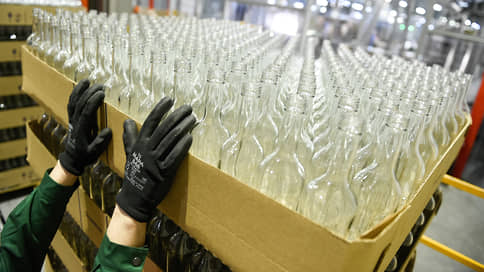Rust plans to launch Russian Standard Moscow Mule cocktail in Russia
[ad_1]

The continued growth in demand for low-alcohol cocktails encourages large beverage producers to expand their range in the category. Thus, a large vodka group “Rust” Rustam Tariko may start production of the Russian Standard Moscow Mule drink in the Russian Federation, which was previously bottled in the United States. Sales of cocktails in Russia are growing, but competition is also getting tougher.
RSV, which is part of Rustam Tariko, a major vodka producer Rustam Tariko (brands Russian Standard and Green Mark), filed an application for registration of the Russian Standard Moscow Mule trademark in May, according to Rospatent. Under this name, the company previously launched the production of low-alcohol cocktails in the USA in an aluminum can.
Rust Group of Companies told Kommersant that they are constantly working to expand their brand portfolio, including in the sought-after category of ready-to-drink low-alcohol drinks, and are developing new products, including cocktails based on their own world-famous brands, such as Russian Standard “. At the end of 2022, sales of low-alcohol cocktails from the group grew by 77% year-on-year, exceeding 2.27 million nine-liter boxes, and the positive growth trend continued in 2023, Rust Group says.
Low-alcohol cocktails remain a dynamically growing category in the alcohol market. According to NielsenIQ, in January-June 2023, sales of such drinks in physical terms grew by 6.5% year-on-year, in money terms – by 27.7%. For comparison: beer sales increased by 1.4% and 8.2%, respectively, vodka – by 2.4% and 7.7%, respectively.
The structures of Rust Group of Companies have been changing the portfolio of brands in the category recently. This summer it became known that the company of the group terminated the license agreement for the Shake brand due to possible disagreements with the Ukrainian company New Products, which owns the brand (see Kommersant dated June 5).
According to Alexander Stavtsev, head of the WineRetail information center, there are examples of low-alcohol cocktails in the world under the umbrella brands of large alcohol companies, one of the most famous is Bacardi Breezer. According to him, in Russia this category has been hit hard by changes in excise policy, and now it may be experiencing a renaissance. The launch of the Russian Standard cocktail could allow the company to broaden its group of potential consumers, he adds.
Ladoga (Tsarskaya vodka, Barrister gin, etc.) says that 35,000 bottles have been shipped since the start of production of the Tsarskaya Collection line of four cocktails. The company considers this a good result.
Competition in the market of low-alcohol cocktails, meanwhile, is intensifying. Thus, the line of vodka-based cocktails is being developed by the Alcoholic Siberian Group (brands Belaya Birch, Five Lakes, Husky), and KVK Group (Koktebel cognac, Medoff vodka) plans to expand the distribution of Longer. According to experts, price and scale of distribution are more important for sales of such drinks, and consumers can switch from brand to brand relatively easily.
But the production and shipment of vodka is now declining. According to Rosstat data available to Kommersant, in January-May 2023 Rust Group was the fifth vodka producer in Russia, reducing production by 29%, to 1.84 million deciliters year-on-year. Shipped during this period by 28% less year-on-year, up to 1.82 million decalitres. The focus of the consumer has shifted from vodka in the minimum retail price (MRP) segment to the economy segment due to an increase in the MRP from 261 to 281 rubles from 2023. for 0.5 l. As the manufacturers themselves note, the main competition is in the middle and economy segment, although premium brands are also showing growth.
[ad_2]
Source link





